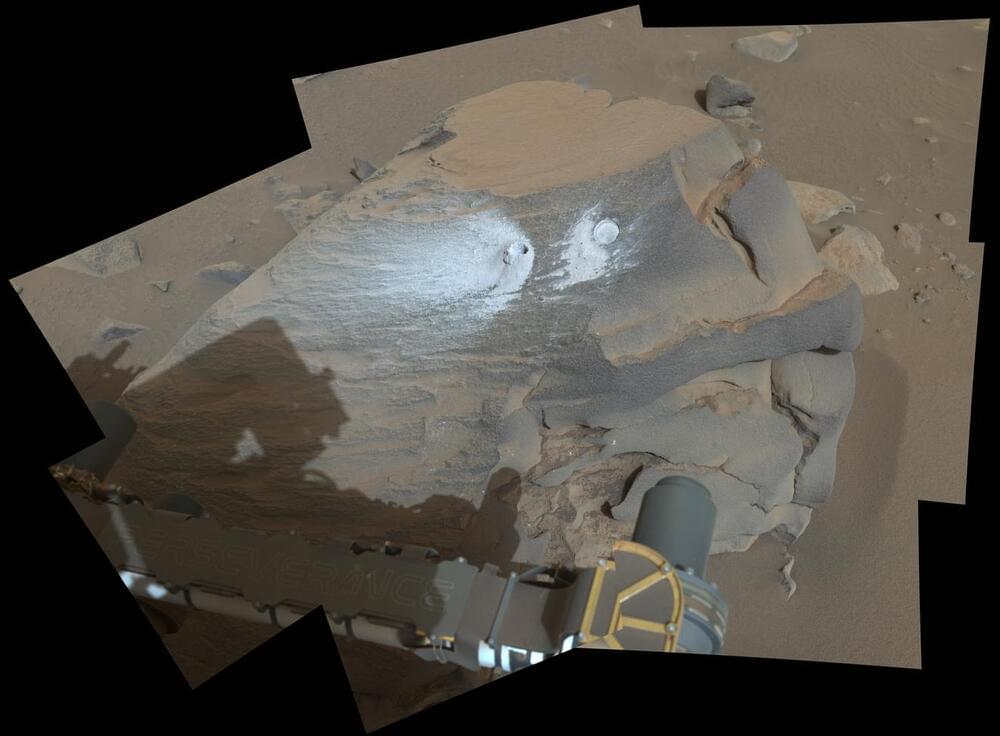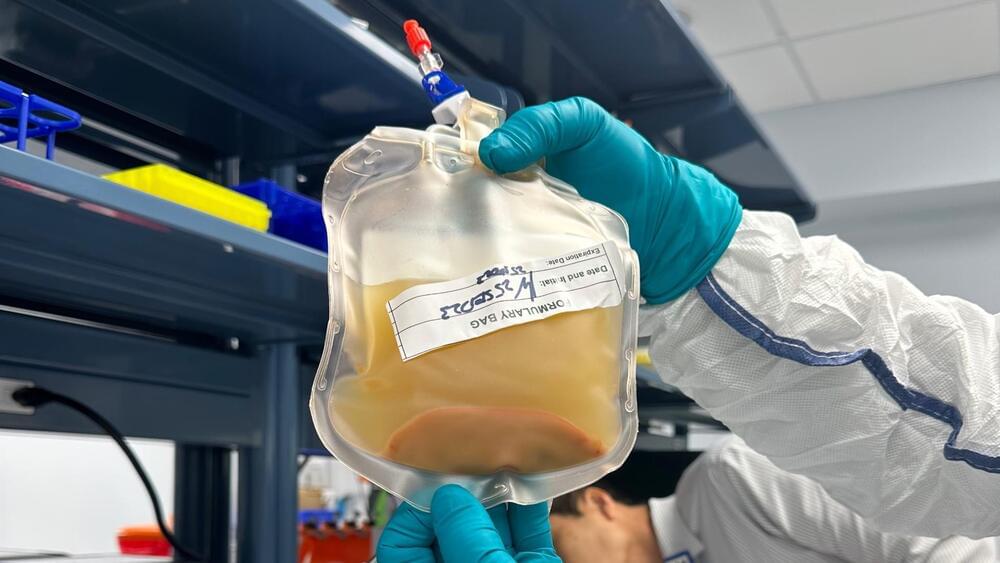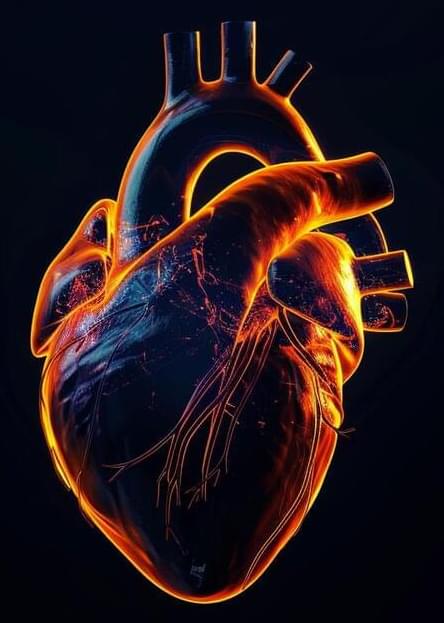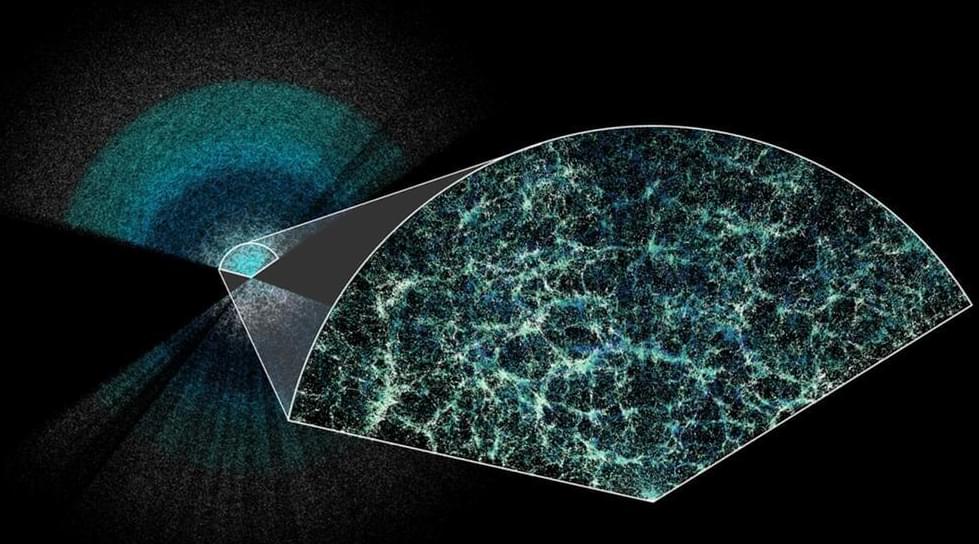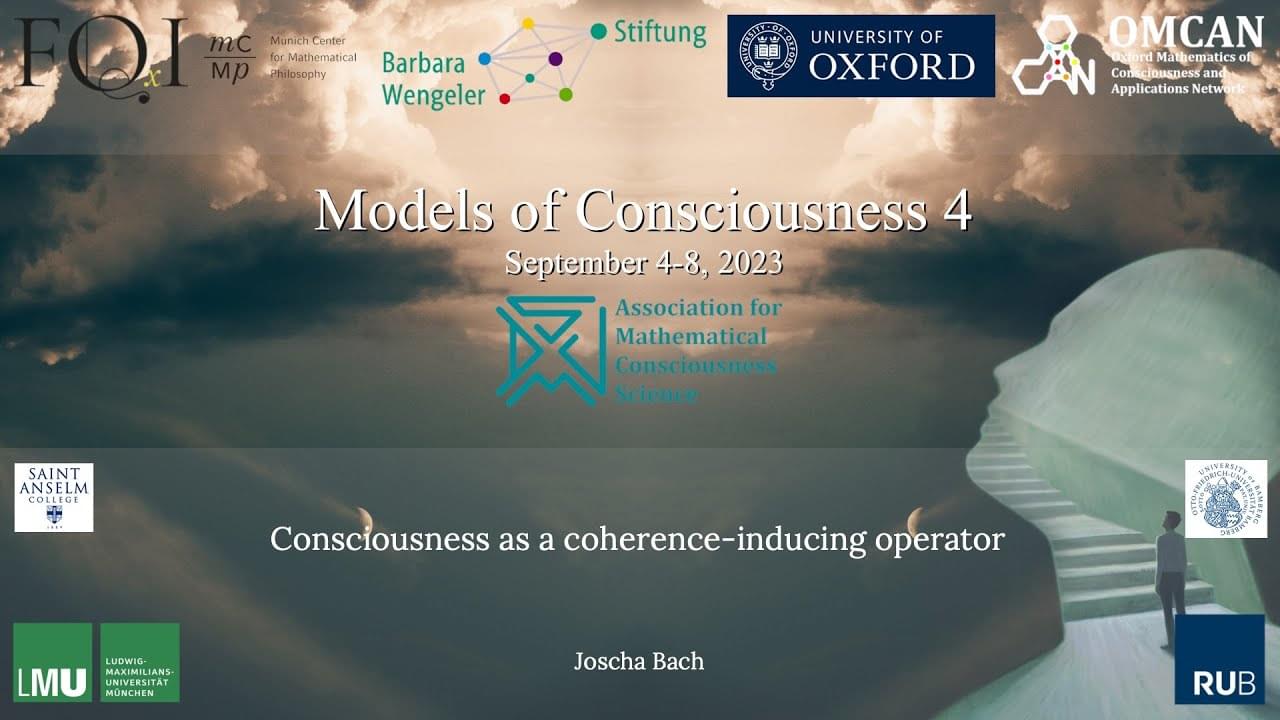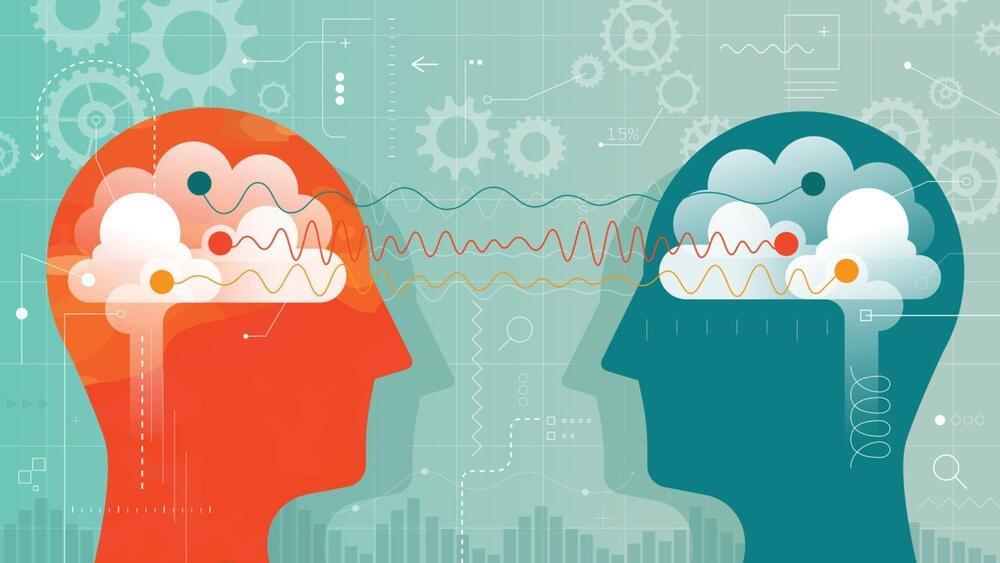Apr 4, 2024
Perseverance Rover’s 24th Sample Unveils Clues to Martian History
Posted by Laurence Tognetti, Labroots Inc. in categories: chemistry, climatology, space
Did Mars once contain life, or even the building block for life? This is what NASA’s Perseverance (Percy) rover has been trying to determine ever since it landed in Jezero Crater, which has shown an overwhelming amount of evidence to have once been site to a massive lakebed. Now, NASA recently announced that Percy has collected its 24th rock sample on March 11th, nicknamed “Comet Geyser”, with this sample being unlike the first 23 in that evidence suggests it was submerged in standing water for an indeterminant amount of time when Mars had liquid water billions of years ago.
Mosaic image of the drill holes where NASA’s Perseverance Mars rover extracted the “Comet Geyser” rock sample. (Credit: NASA/JPL-Caltech/ASU/MSSS)
“To put it simply, this is the kind of rock we had hoped to find when we decided to investigate Jezero Crater,” said Dr. Ken Farley, who is a project scientist for Perseverance and a professor of geochemistry at the California Institute of Technology. “Nearly all the minerals in the rock we just sampled were made in water; on Earth, water-deposited minerals are often good at trapping and preserving ancient organic material and biosignatures. The rock can even tell us about Mars climate conditions that were present when it was formed.”
